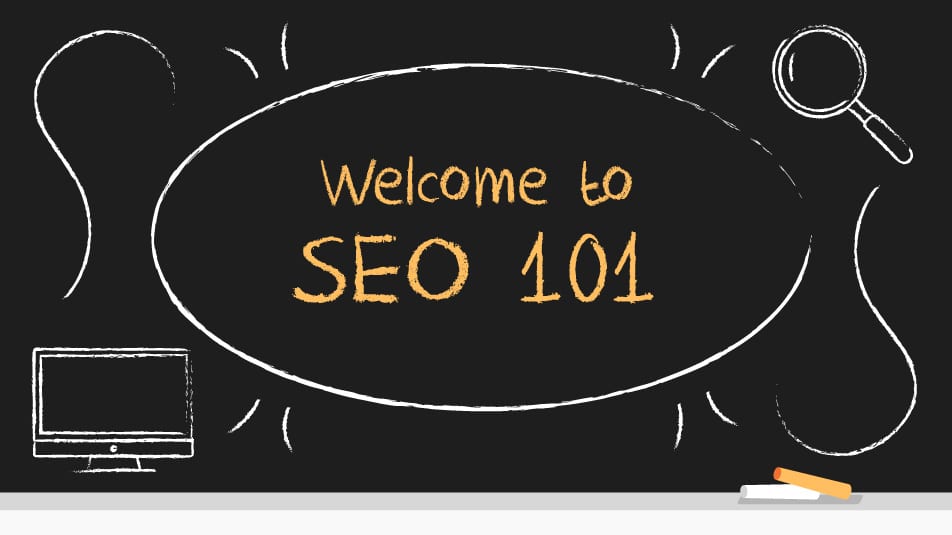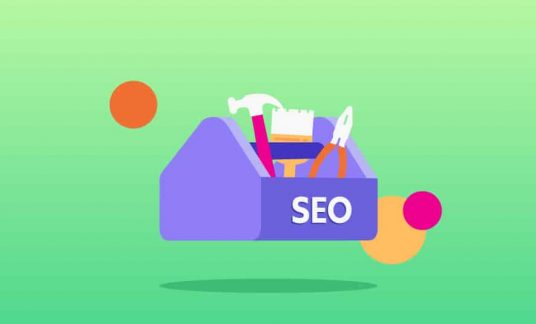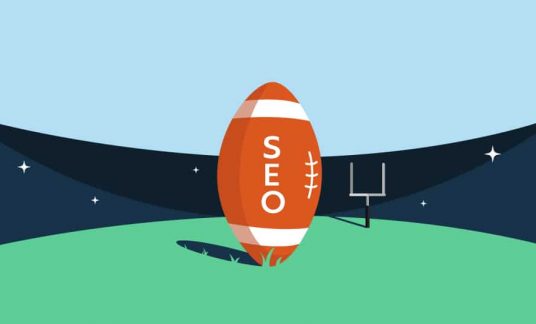Is SEO dead?
The fate of search engine optimization (SEO) has been debated for years. Some may argue yes — and that’s half true.
Gone are the days of successful mass emails — the ones that claim they can fix your website’s problems or build your high-quality backlinks, all without taking the time to even customize your name.
The same fate pertains to keyword stuffing, thin content, private blog networks (PBNs) and all other forms of low-quality SEO techniques. In that regard, dubious SEO tactics and the days of manipulating search engines are indeed dead.
A New Era for SEO
The future of SEO is far from bleak. With each algorithm update, Google grows smarter and smarter when ranking high-quality content. Websites that have valuable long-form articles, credible authors and top-notch user experience (UX) are headed for success in 2021.
Let’s dive deeper into the most important SEO basics, what they are and why they matter for your website. We’ll cover 3 main components:
- On-page SEO
- Off-page SEO
- Technical SEO
What Is SEO?
To start with the most basic question, what does SEO stand for? Search engine optimization is the process of optimizing your content so search engines will rank it organically on the first page of search results for specific keywords. The goal is to obtain high-position rankings for users to easily find your pages and click on your website.
Unlike paid advertising, organic rankings only appear in the unpaid section on search engine results pages (SERPs).
Why Is SEO Important?
If SEO is done effectively, the results can impact a company’s website tremendously. In the tech-savvy age we live in, SEO’s essential for websites to show naturally on the first page of search results. With proper optimization, your pages can potentially rank in the first 5 organic search results, which according to digital marketing company Zero Limit Web, accounts for 67.6% of all clicks.
Additional SEO benefits include but aren’t limited to:
- Higher keyword rankings
- Increased organic traffic and user engagement
- More returning visitors
- Greater conversion rates and purchases
- Elevated brand awareness and credibility
- Larger potential to gain consumer trust
- Better user experience
- Improved site speed and mobile usage
- Larger opportunities to surpass the competition
- Increased chances to target local, regional and international consumers
- 70% of marketers see SEO as more effective than pay-per-click advertising (PPC), according to Databox
Of course, SEO also poses some risks:
- Gradual results (it doesn’t happen overnight)
- Increased attention from competitors
- Risk of fallen rankings because of Google updates
- The possibility of receiving a Google penalty
We strongly believe the long-term rewards of SEO are worth the risk. Plus, we aren’t the only ones who think so: 57% of business-to-business (B2B) marketers in 2020 also declare that SEO has the biggest impact on lead generation, according to marketing adviser IMPACT. At the end of the day, the choice is up to you.
So, what are the top components that can make or break SEO? Let’s review the top 3 components that can make or break your SEO strategy.
1. On-Page SEO
On-page SEO is the component that specifically focuses on optimizing your website at the page-level. This includes content development and content optimization to facilitate higher search rankings and more relevant search traffic.
Keyword Research
When it comes to on-page SEO, relevant keyword research is an essential component that lays the groundwork for success.
What Is it?
Keyword research is a core process in on-page SEO that involves conducting research to identify the keyword terms and phrases users search for. Once you identify the keywords you’d like to use, you must ensure your content topic matches user search intent. That way, you’ll be able to develop a strong piece of content that uses the keywords properly and provides the answers users need.
Why Does It Matter?
It’s simple: Without the right keywords, your content will be lackluster, poorly targeted and may miss user search intent completely.
Keyword research is a building block to great on-page optimization and content that provides the right answers. Proper keyword research opens up an array of doors, including higher keyword ranks on SERPs, increased site traffic and quality content that will keep readers returning.
What Are the Different Types?
Keyword types come in all shapes and sizes. Keywords, which refer to a single word, are typically high in search volume and high in ranking difficulty. Keyword phrases, on the other hand, are larger sets of words formed as phrases that lead to more targeted searches.
Let’s review 3 types of keywords:
Short-Tail Keywords: These are broad search phrases that are typically 1-2 words. This type of keyword is fairly standard and may also be referred to as broad or generic keywords. Short-tail keywords tend to have higher competition and higher search traffic.
Mid-Tail Keywords: These are search terms that range between short-tail keywords and long-tail keywords. They’re usually 2-3 words and are slightly more detailed than short-tail keywords. Their competition and search traffic are typically moderate.
Long-Tail Keywords: These are specific search terms that are more targeted to a niche topic and reach a smaller audience. Long-tail keywords typically have 4-plus words, lower competition and less search traffic.
-
Takeaways
Finding and selecting the right keywords form the foundation for successful content development. That’s why it’s essential to learn all the steps of the keyword research process from start to finish.
SEO-Friendly Content
We’ve heard time and time again that content is king. As Google grows more advanced at recognizing and rewarding high-quality content, creating SEO-friendly content should be a top priority.
What Is It?
SEO-friendly content is any form of quality content on your website. Its intent is to educate readers about a given topic while simultaneously designed to rank organically on SERPs.
Why Does It Matter?
Ever since Google developed stronger capabilities to detect inadequate content, it’s essential for your website to possess exceptional written content. However, simply conducting keyword research and publishing a brief blog post is no longer enough to help you climb the ranks.
Keep in mind while you’re creating new content, your competitors may be following the same exact steps for identical keywords and topics. In a sea of competition, what can you do to emerge on top?
Long-form content is a starting point. Your goal should be not just to answer the question of your readers: You must strive to go above and beyond the extra mile. We urge you to start by addressing the following questions:
- Who’s my audience?
- Why are they coming to my website? What types of questions do they have?
- How can we answer their questions in the most thorough way possible?
- What stage of the decision-making process are they in?
- How can I create content that supports them in reaching the next stage?
- Once they reach the next stage, what other questions might they have?
- What can I do to make my content the most valuable resource on the topic?
- How will my content bolster my expertise, authority and trust (EAT)?
- What type of content should I create to best reach my audience?
What Are the Different Types?
With content acting as a vital bridge to SEO success, it’s imperative to carefully assess the various types of content to create. Our 3 examples include but aren’t limited to:
Long-Form Blog Content: Long-form content is content that exceeds 2,000 words. It’s lengthy, informative and detailed. Also, it can be presented in various styles:
- Ultimate guides
- Step-by-step tutorials
- How-to guides
- “What is” articles
- Review articles
- Resource pages and data-driven articles
- Listicle-style posts
- Written interviews and online collaborations
- Buyer’s guides
- Versus articles
E-books: An electronic book that can be accessed on your website and downloaded.
Case Studies: A written, in-depth investigation that requires a variety of resources, stateable statistics and conclusive findings on a given topic.
-
Takeaways
After you research your online audience in addition to your targeted keywords, crafting quality content is an essential next step. However, for optimal results, it’s important not to skimp on your content strategy. Rather, show your strategy some love by creating content with the long-term goal of supporting your readers in the best way possible.
SEO Content Optimization
Last but not least, before you hit the publish button, you’ll need to optimize it. We’ll walk you through the final details you’ll need before your new content goes live.
What Is It?
SEO content optimization, also known as on-page optimization, is a key component of on-page SEO. On-page optimization is simply as it sounds — the SEO tasks performed on your web pages to ensure they’re optimized for both readers and search engines.
Why Does It Matter?
To break it down, SEO content optimization informs search engines of what your content is and what exactly it’s about. Without proper usage of it, even the most notable forms of content will fall short.
And that’s not the end: It also guides search engines to determine your page’s relevance to user search queries. If your high-quality content’s well-optimized, Google’s more likely to rank your pages higher on SERPs. We’re certain it’s worth the work.
What Are the Different Factors?
Of course, as with all components of SEO, there are different factors of on-page optimization that need to be considered. Three of which include:
Image Alt Tags: Alt tags, also known as alt descriptions or alt attributes, are tags used to describe an image. A key benefit of clear, accurate image alt tags is that they make it easier for search crawlers to find, identify and properly index them.
Meta Descriptions: This is a hypertext markup language (HTML) tag that provides a thorough overview of what your article is about and how it will benefit users. Meta descriptions appear under your page titles on SERPs.
Primary Keywords: This typically is the main keyword you’ll target in your article. Primary keywords often appear in your title, meta description, intro paragraph and sprinkled throughout your headers and body content.
-
Takeaways
SEO content optimization is an SEO basic you can’t afford to overlook. Once you have your SEO process down pat, you’ll then explore the other areas of focus for your website.
2. Off-Page SEO
In contrast, off-page SEO focuses on the exact opposite — the tasks completed outside of your webpage to increase organic rankings. After crafting excellent optimized content, the next step is to drive traffic to those pages through the help of link building, relationship building and off-page promotions. Link building is often the most common activity of off-page SEO.
Link Building
You’ve written and optimized your web content. However, that alone isn’t enough to stand out among the crowd. You’ll also need to spread awareness to your articles, encourage users to read your writing and bolster your brand reputation. A key ladder to success is quality link building. But first, let’s dive into more of the SEO basics.
What Is It?
The concept of link building is as straightforward as it sounds: The act of building inbound links or backlinks from third-party websites to your pages with the goal of increasing organic traffic, rankings and establishing your online presence. A key aspect to note about link building is that it can be done either extremely well or wrong based on your tactics. Our goal is to help you get it right the first time.
Why Does It Matter?
Similar to what we discussed in our backlink analysis guide, think of it this way: You’re voting for an election with the hope your desired candidate will win. On voting day, you anxiously keep track of the polls to determine which candidate is headed toward victory. You hope your candidate of choice receives the highest number of votes.
Each backlink acts as a vote of confidence in the eyes of Google, so it’s essential to create, strategize and engage in link-building efforts. With every quality backlink that points to your website, you’re more inclined to be seen as a trustworthy expert and authority in your industry. Note how we emphasized quality backlinks over quantity.
Gone are the days where pages with the largest number of backlinks always come out on top. Rather, redirect your focus to gaining backlinks from websites you admire. Quality votes of confidence are bound to improve your rankings and further instill the importance of SEO for your website.
What Are the Different Types?
Guest Posting: Guest posting, also referred to as guest blogging, is the act of contributing content to third-party websites with the hopes of helping their readers, boosting your credibility and gaining quality backlinks. Guest posting is often controversial and should be done skillfully and sparingly.
Content-Based Link Building: Links that are added to a third-party piece of content because the link provides value to their readers. These links can be placed naturally or be requested directly through tactics such as email outreach.
Broken Link Building: The process of identifying broken outbound links on third-party websites, recreating the broken content on your website and proposing your new content to the third-party sites as new resources and link replacements.
-
Takeaways
Proper link building can be a game-changer when building new relationships, climbing the ranks (literally) and increasing relevant traffic to your website. To succeed, it must be done genuinely, honestly and ethically.
3. Technical SEO
So now you’ve got great written content and killer inbound links. What’s next? Through every stage of your website, technical SEO’s always a must.
UX Design
User experience (UX) design is a technical SEO element also known as user experience or UX.
What Is It?
UX refers to the interactions a user has with any area of your website. This can include how they navigate a product page, check out an item or submit a contact form.
Why Does It Matter?
The major goal for UX is to ensure users have a positive experience when visiting your website. They should be able to navigate through your pages seamlessly and effortlessly for the best experience possible.
What Are the Different Elements?
Product Pages: Product pages must be easy to locate and browse through on your website. Each page should have clear information about what the product is, how much it costs and how the users can move it into their shopping cart.
Checkout Carts: All checkout carts must be easy to navigate and adjust. It shouldn’t take numerous steps, pages or clicks for a user to enter their payment information and complete their purchase.
Inquiry Forms: It’s imperative for inquiry forms to be brief, quick to complete and easy to submit. These criteria also apply to product demo forms and sign-up forms.
-
Takeaways
Simplistic and inviting UX is a key determining factor of whether or not users choose to return to your pages. When designing your website, it’s essential to prioritize creating a user-friendly experience.
UI Design
User interface (UI) design is another technical SEO element worth implementing.
What Is It?
UI refers to the visual design elements that help facilitate better user interactions with your website. This can include text formats, image sizes and color schemes.
Why Does It Matter?
The most significant goal for UI is to create a pleasing aesthetic design that’ll enhance the user’s experience on your website. If the visual design elements compliment every step of the user’s journey — from simple browsing to product purchasing — the likelihood of effective user engagement and acquisition is substantially greater.
What Are the Different Elements?
Visual Design: Visual design must be crafted to complement user navigation and encourage them to continue their journey throughout your website.
Text and Font: Ensure all text is easily readable and scannable on different screens and devices.
Color Scheme: Foster a color scheme for your website that’s flattering, inviting and encouraging to the eye.
-
Takeaways
When it comes to creating the best user journey on your website, combining the efforts of both UX and UI must be a priority. Although we just touched upon these components briefly, there’s an array of other technical terms and concepts to take into consideration.
Mobile SEO
Say you’ve built your new website. You’ve got killer content, an awesome backlink profile and an exceptional, user-friendly design. This brings us to the final question: Is your website also optimized for mobile?
What Is It?
Mobile SEO is the practice of search engine optimization, specifically for users who access your website through a smartphone or tablet. The goal is to provide users with a flawless view on their mobile devices, regardless of their load times and screen sizes. Some of the components emphasized through mobile SEO are site design, site speed and site structure.
Why Does It Matter?
With a significant number of mobile users on the rise, ensuring your website’s optimized for mobile is now more important than ever before. According to Google, more than 51% of smartphone users have discovered a new company or product when conducting a search on their smartphones.
This statement backs up the importance of SEO even further when it comes to prioritizing the user experience and adapting to user lifestyles. By optimizing for fast site speed, you’ll be ready to target and tailor to all smartphone and tablet users.
What Are the Different Elements?
Page Speed: The amount of time it takes for your website or webpage to load based on factors such as the device types, site servers and image sizes.
Progressive Web Apps (PWAs): Progressive web apps, also referred to as PWAs, are web applications built from programming languages such as Cascading Style Sheets, HTML and JavaScript. The objective is to create an advanced, app-like experience.
Schema Markup: Pieces of code with predefined semantic tags that can be incorporated into your HTMLs. Long story short: schema is used to communicate with search engines and provide users with more specific search results. An example of this is star-ratings listed below a product page on SERPs.
-
Takeaways
Since smartphones and tablets are used more than ever to browse the web, mobile SEO isn’t a basic strategy to simply consider. It’s essential for both the short-term and long-term successes of your business.
Additional Key SEO Terms
Now that we’ve guided you through the top components of SEO, you should have a clear understanding of the key elements you’ll need to optimize your website. Before we wrap things up, we have a few additional terms we think you’ll find useful:
White Hat SEO
Ethical SEO practices with the intent to bolster organic search rankings and increase organic traffic while following Google’s best practice guidelines.
Black Hat SEO
Unethical SEO practices with the intent to deceive organic search rankings and increase organic traffic while going against Google’s best practice guidelines.
KPIs
Key performance indicators (KPIs) are measurable values used to determine the success marks of your website’s SEO strategies.
Web Traffic
The quantity of data fired out and received from users that click into your website.
Search Queries
The types of terms and search phrases users enter into search boxes, in order to generate a list of relevant results.
Crawlers
A technology used by search engines to obtain data from your entire website so the pages can be indexed on search engines, making it easier for users to find them.
Indexing
When data is crawled, downloaded and stored into search engine databases for relevant results to be displayed on SERPs.
De-Indexing
In contrast, when stored data is removed from search engines so pages no longer rank on SERPs.
Do-Follow Links
Links that pass authority or “link juice” to other pages and allow crawlers to follow them.
No-Follow Links
Oppositely, links that don’t pass any authority or “link juice” to other pages. Crawlers don’t crawl them and page rankings aren’t impacted.
SEO Basics: Key Takeaways
Clearly, it’s no longer acceptable to only make a few keyword adjustments, create your title tags and meta descriptions and call it a day.
In an age where SEO’s become a “make or break” factor in the success of all websites, performing the bare minimum isn’t an option.
Instead, you must have a thorough understanding of the importance of SEO, what the different avenues are and which roads you should pursue. Continue to hone your skills each day and you’ll be on the fast track to scaling your digital presence.











